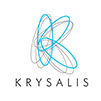
LEAN Management – understanding its essence

LEAN Management is a bit like yoga; the true practitioner doesn’t claim he practices it – he just lives it . LEAN is modelled on the Toyota Production System (TPS), but Toyota doesn’t talk of it, it just pervades all they do! LEAN has myriad variants- LEAN Six Sigma, quick LEAN, Agile, etc. But the essential principle is the same, focus on value creation and eliminate all activities that don’t add value.
The guiding principle of LEAN, therefore, is the concept of Value. What the customer is willing to pay for is called Value adding, everything else, is Non-Value adding. LEAN methods are aimed at separating the Value Adding (VA) costs from the Non Value Adding (NVA) costs and systematically eliminating the NVAs. When NVA costs are eliminated (or reduced), profit increases. This is the LEAN principle.
If NVA elimination is the soul of LEAN, its methods are its flesh and blood. Here again, a yoga like approach is adopted. The organization is viewed holistically, like a continuous value creating organism with the customer in the front and suppliers behind. Every act performed in any part of the organization impacts every other. This complex system in held in place and energised through information that keeps flowing through the system triggering activities and events all creating either value or non-value. Material flows through the system, gathering Value and incurring costs, finally reaching the customer who rewards the organization with Price. This cycle goes on and on. LEAN evaluation starts with mapping this information and materials flow, using a method known as Value Stream Mapping (VSM). LEAN practitioners have an extensive tool kit to identify and eliminate NVAs. Some of these are Pareto analysis; Check sheets, Cause-Effect Diagrams, Why-Why analysis and SMED
LEAN analysis starts with identifying NVAs or or “wastes”. These are are categorised into three. The most eloquent way of naming these categories is to revert to their quaint Japanese names of Muda, Mura and Muri. Understanding these is understanding LEAN.
Muda is what doesn’t add value for the consumer but consumes resources. There are seven types of Muda identified in LEAN. These are overproduction, waiting, conveyance, processing, inventory, motion, and correction. To explain, these are : Producing in excess of demand, waiting for the next process / machine to be ready, moving material and people from station to station, avoidable processing of material, excess inventory , avoidable movements by operators, and rework. Eliminating these seven wastes directly adds to a company’s bottom line.
Mura, is a bit more difficult to understand. It stands for unevenness. LEAN believes that there should be evenness across the supply chain – flow of orders to company; raw material flow into and within the company; and flow of finished goods to customer. Any weekly or monthly spikes, or variations in flow, leads to bunching up of material and resources. This causes system over load or strain and eventually increases costs.
This overburdening of the system is called Muri. This overburdening causes a variety of problems: periods of over use of resources followed by periods of underuse. If capacity is planned for the peak volumes, there is the waste of idle resources during the troughs. If on the other hand capacity is planned for the troughs, the whole system gets stressed during peaks. It is therefore desirable to even the flow of material through the system – a key pillar of the LEAN method.
LEAN is a departure from time tested philosophies of manufacturing. Maximising production is considered a sin ; producing only what is required ,when it is required, is the mantra. Quality control is considered a waste as it doesn’t add value , the process is to be designed to assure quality with little need for control. Skill is considered unnecessary. Processes and methods are standardised so that very little skill is needed to manage them and any operator is able to operate any process. This allows flexibility and .
LEAN offers a fresh way of looking at the process of management. The practice of LEAN requires a change in mind set. “Thinking LEAN” has to precede “being LEAN”. This is the challenge. Engineers and managers trained in the old school, with a reductionist paradigm, find it difficult to adopt the holistic paradigm that is integral to LEAN. There lies the difficulty in LEAN implementation.
To quote Jim Womack, the person who coined the termed LEAN Management, after studying the Toyota methods:
“This will be hard work and will require courage because it will often require you to rethink longstanding sales, management, and accounting practices that create the Mura and Muri. However, if you can eliminate Mura and Muri at the outset to create a stable environment for your sales, operations, and supply management teams, you will discover that Muda can be removed much faster. And once removed it will stay removed.”
The LEAN journey is arduous, requiring expertise on the part of the facilitator, trust and resilience on the part of the organization. The end result of a LEAN journey, well travelled, is wealth and happy customers at the end of the road.

